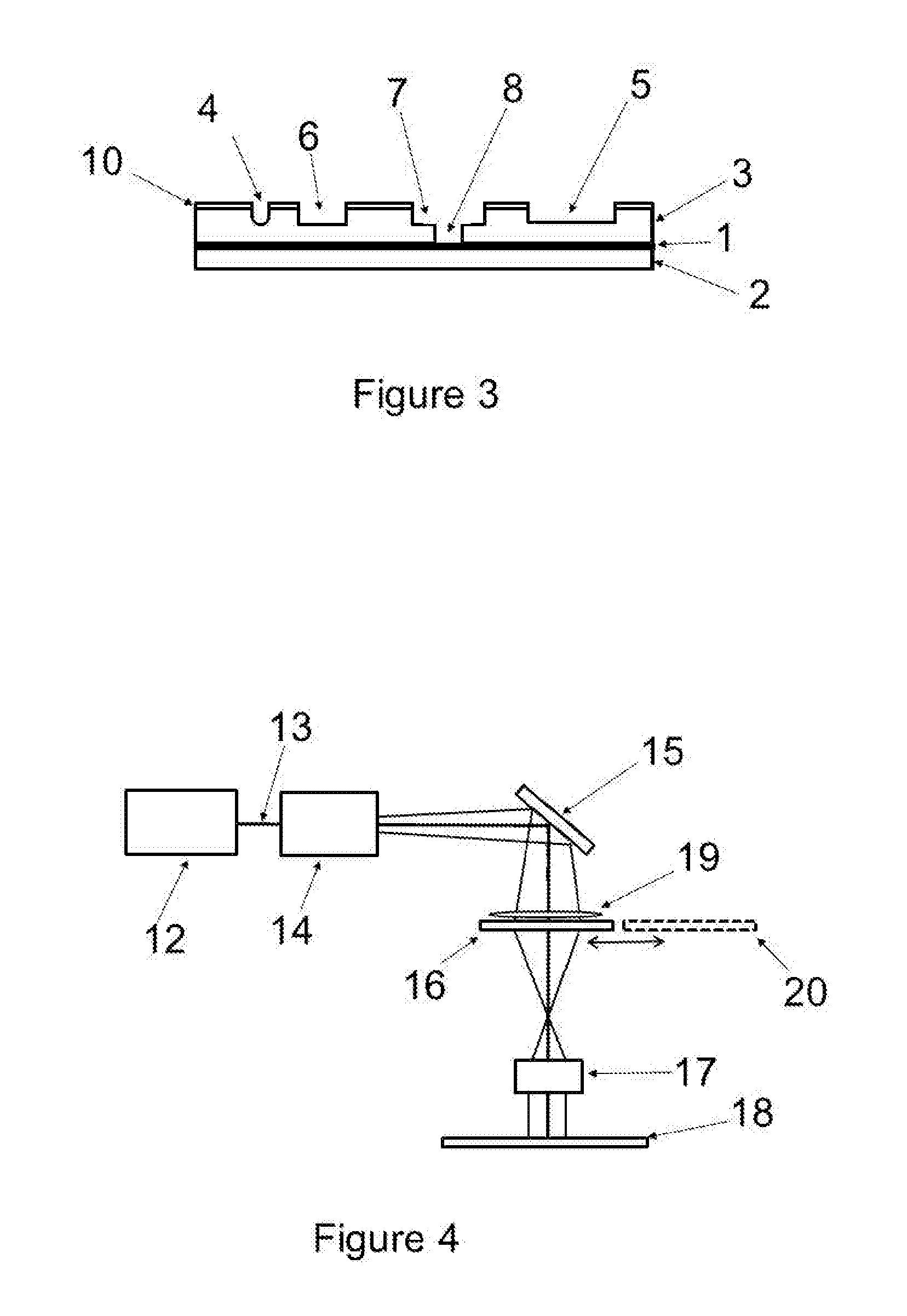Method and apparatus for forming fine scale structures in dielectric substrate
a dielectric substrate and fine scale technology, applied in the direction of laser beam welding apparatus, lithographic mask, laser beam welding process, etc., can solve the problems of slow direct write process, difficult control of depth to high precision over all features, and difficulty in maintaining constant depth at the intersection of grooves and pads
- Summary
- Abstract
- Description
- Claims
- Application Information
AI Technical Summary
Benefits of technology
Problems solved by technology
Method used
Image
Examples
Embodiment Construction
[0044]FIG. 1: This shows a section of a high density interconnect (HDI) printed circuit board (PCB) or integrated circuit (IC) substrate and indicates the type of “embedded” structures that are required to be formed. A copper layer 1, patterned to form an electrical circuit, is supported on a dielectric core layer 2. The copper layer 1 is over coated with an upper dielectric layer 3 into which various structures have been formed by laser ablation. Grooves 4, 4′ and 4″, large pad 5 and small pads 6 and 7 all have the same depth which is less than the full thickness of the upper dielectric layer 3. For IC substrates, groove widths and pad diameters required are typically in the range 5 to 15 microns and 100 to 300 μm, respectively, with depths in the range 5 to 10 microns. For HDI PCBs, grooves may be wider and deeper. Contact hole (or via) 8 inside pad 7 is formed by laser ablation to a greater depth such that all the upper dielectric layer material is removed to expose an area of th...
PUM
| Property | Measurement | Unit |
|---|---|---|
| energy | aaaaa | aaaaa |
| diameters | aaaaa | aaaaa |
| diameters | aaaaa | aaaaa |
Abstract
Description
Claims
Application Information
 Login to View More
Login to View More - R&D
- Intellectual Property
- Life Sciences
- Materials
- Tech Scout
- Unparalleled Data Quality
- Higher Quality Content
- 60% Fewer Hallucinations
Browse by: Latest US Patents, China's latest patents, Technical Efficacy Thesaurus, Application Domain, Technology Topic, Popular Technical Reports.
© 2025 PatSnap. All rights reserved.Legal|Privacy policy|Modern Slavery Act Transparency Statement|Sitemap|About US| Contact US: help@patsnap.com



